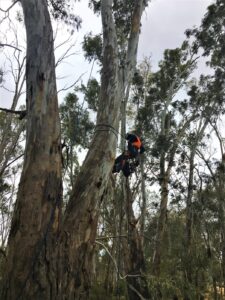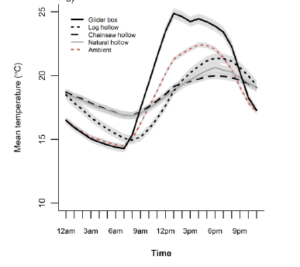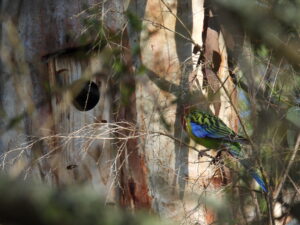In nature, tree hollows can take up to 250 years to develop , but some endangered and threatened hollow-using species don’t have that long to wait!
Treetec has been at the forefront of developing methods to introduce hollows into trees that are able to be used by animals immediately.
These introduced hollows are made by our arborists using a variety of tools including chainsaws. The design and placement is adjusted to suit the target species.

Introduced cavities provide a complimentary approach to the installation of nest boxes, and can also offer a direct comparison, in terms of both microclimate temperatures, and occupation by target species.
The Treetec team were involved in one of the first studies to investigate the thermal properties of introduced cavities compared to nest boxes and natural hollows. The results showed that introduced cavities are more thermally buffered from outside temperature fluctuations compared to nest boxes – this means that they have a more stable microclimate that animals generally prefer. The temperatures were very similar to those found in natural hollows. Read about the study here.

Since 2015 Treetec has been involved in a number of large-scale hollow installation projects. These include the Echuca-Moama Bridge Project and the Whitehorse Council habitat improvements.
Follow up inspections at a number of these projects suggest that there is relatively high acceptance of the cavities from target species and the host trees are responding well to the introduced wound. A follow-up check after 3 months of our cavities installed at Whitehorse, found evidence that the target species – Eastern Rosella’s, were potentially using our hollows!
Hollows carved by the Treetec arborist team have also been featured on Gardening Australia.

